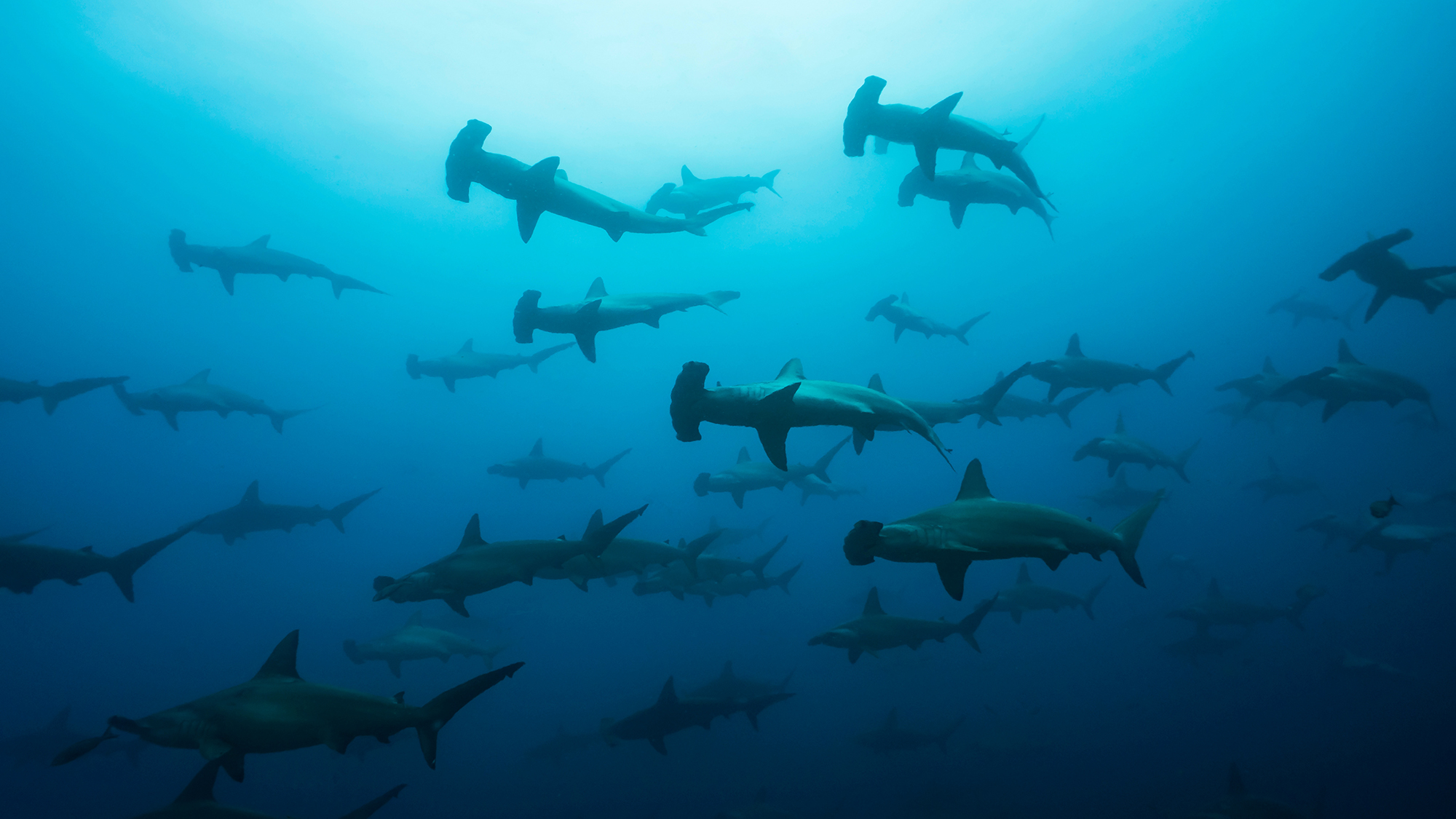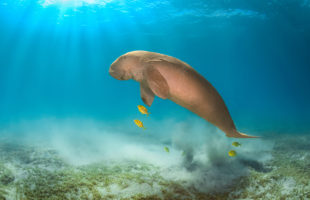They are feared in many places. They should be more afraid of humans than the other way round: hammerhead sharks are important predators in the Indian Ocean. Without them, the marine ecosystem around Madagascar would not function.
A special representative of the hammerhead sharks is Sphyrna lewini, the scalloped hammerhead shark. The name says it all: the broad, hammer-shaped head is arched. It is not so strangely shaped for nothing. Scientists call the hammerhead a cephalofoil. It improves the animal’s sensory perception. The so-called Lorenzinian ampullae are located across the entire width of the head. They ensure that the shark can perceive electrical impulses from its surroundings and temperature differences in the sea. They also ensure the animal’s orientation to the earth’s magnetic field. With the Lorenzinian ampullae, hammerhead sharks always find the right path, no matter how far away they are from their home waters.
Scalloped hammerhead sharks are found in deeper waters around Madagascar. They are among the larger hammerhead sharks with lengths of 3.7 to 4.3 metres and weights of around 150 kilograms. The young animals gather together in schools, which offer them better protection from larger predatory fish. They mainly live in shallow waters, often in the protection of coral reefs. This is why young sharks in particular are often found close to the coast.
Hammerhead sharks remain faithful to their mate for life
When they reach sexual maturity, sharks look for a partner for life. And even loners don’t stay alone for long. Unusually for sharks, scalloped hammerheads form large schools that migrate and hunt together. They exhibit pronounced social behaviour, which runs completely counter to their image as a “dangerous beast”. In groups, they move more in the open sea. Only rarely do they venture into estuaries and the outer edges of coral reefs.

A characteristic behaviour of the scalloped hammerhead shark is the so-called corkscrew swim. In this behaviour, the hammerhead shark twists around its axis like a corkscrew. The exact purpose of this behaviour has not been conclusively clarified. It is assumed that, together with other gestures such as head shaking or mutual ramming, it serves to communicate within the group in the sense of territorial behaviour.
Scalloped hammerhead sharks are ovoviviparous, giving birth in a hurry. This means that the young sharks are nourished by a yolk sac in the womb, which is later converted into a placenta. After a gestation period of nine to ten months, similar to humans, the female hammerhead shark gives birth to up to 40 young. They are then just half a metre long and grow very slowly. They only reach sexual maturity when they are one and a half to two metres long.
The hammerhead shark’s teeth are arranged in several rows. This may look daunting, but it only has advantages for the shark. If a tooth breaks off, it is simply replaced by the next one. This is called a “revolver bite” because teeth are constantly “reloading”. In this way, a single hammerhead shark can have several thousand teeth in its lifetime.
The scalloped hammerhead shark is now highly endangered
The menu of the scalloped hammerhead shark includes a whole range of fish, including barracudas, mackerel, sardines, squid and crustaceans. However, the hammerhead shark is pragmatic when it comes to eating: if a smaller shark or stingray crosses its hunting grounds, it will not be spurned. Humans are not part of the hammerhead shark’s diet. Of the less than two dozen known accidents involving the animals, not a single one has ended fatally. Due to the close-to-shore lifestyle of the scalloped hammerhead shark, encounters between humans and animals are relatively frequent – even though the hammerhead shark is actually nocturnal.
 Fishermen in Ambilobe in north-west Madagascar with freshly caught young hammerhead sharks
Fishermen in Ambilobe in north-west Madagascar with freshly caught young hammerhead sharks
Adult scalloped hammerhead sharks have hardly any enemies in the sea – except for humans. The scalloped hammerhead shark is hunted on all coasts of Madagascar. The meat is eaten and the teeth are sold as souvenirs. The fins are dried and sold to China for bizarre sexual enhancers and shark fin soup. Unfortunately, due to the great demand for shark fins in Asia, the dubious practice of finning has also found its way to Madagascar. This involves cutting off the shark’s fins and throwing the still-living shark back into the water. Unable to swim, the shark sinks to the bottom and dies miserably. If it is not hunted itself, the scalloped hammerhead shark often dies as unwanted by-catch in fishing nets. This is because hammerhead sharks often live together with heavily fished and commercially sought-after fish such as tuna.
The scalloped hammerhead shark is now considered critically endangered. Populations have fallen by a good half in the last 50 years. Since 2014, international trade in scalloped hammerhead sharks has been restricted. In Madagascar, however, illegal fishing and finning are hardly ever prosecuted. A sad future for the hammerhead shark if no action is taken soon.
Title picture © nicolas, licensed at AdobeStock
School of sharks © Janos, licensed at AdobeStocks
 MADAMAGAZINE Your Magazine about Madagascar
MADAMAGAZINE Your Magazine about Madagascar




